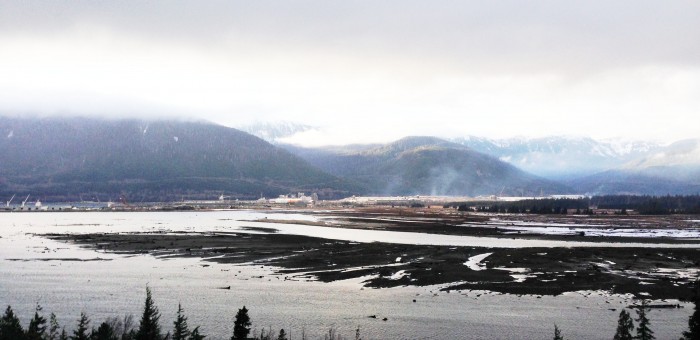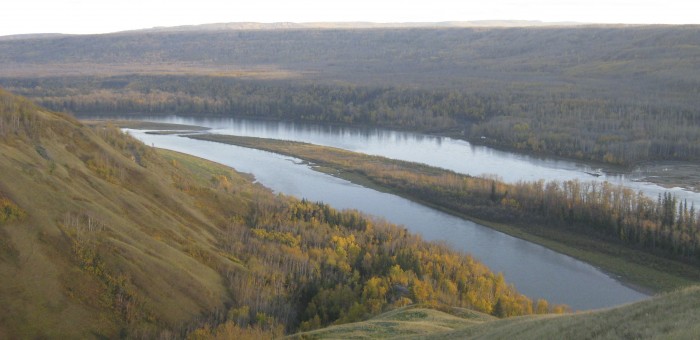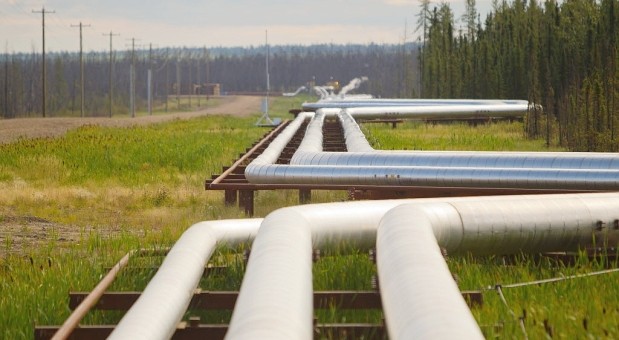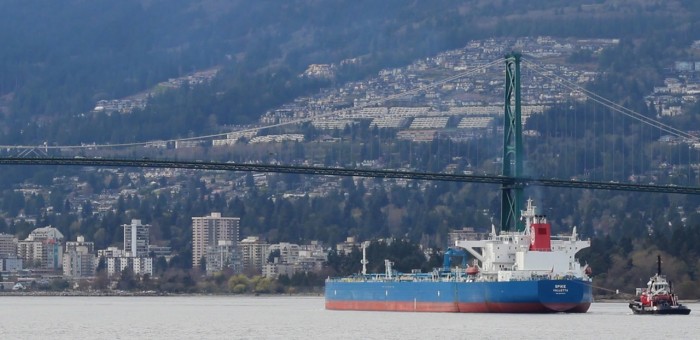Environment
New airshed study is a “nail in the coffin” for government LNG dreams in Kitimat
Media Statement: July 18, 2014
New airshed study is a “nail in the coffin” for government LNG dreams in Kitimat
For Immediate Release
The new Kitimat Airshed study clearly shows that it is not possible to put four new LNG plants into the Kitimat airshed without “critical” impacts on human health according to Andrew Weaver, MLA for Oak Bay-Gordon Head and Deputy Leader of the BC Green Party.
“The B.C. Government is not painting a complete picture of the serious ramifications of this study,” says Andrew Weaver. “They are trying to paint what is actually a dire conclusion in good light to avoid undermining their LNG dreams. The study undeniably concludes that if you put four LNG plants into Kitimat you will have critical impacts on human health.”
The Kitimat Airshed Assessment study was commissioned by the B.C. Government to explore the impact that major industrial development would have on the Kitimat airshed. The study first considered the impacts of building four LNG plants and then considered the impacts of adding an oil refinery. It also considered various ways of mitigating toxic emissions.
The study concludes that even under the best case scenario with no oil refinery and with full treatment of Rio Tinto Alcan smelter emissions, four new LNG plants will raise sulphur dioxide levels to the point of causing “critical” risk to human health. Those plants will also increase nitrogen dioxide levels to the point of causing “high” risk to human health.
The study also concluded that the only way to avoid high or critical risk of aquatic ecosystem acidification is for all LNG plants to be powered by electric drives, for there to be no oil refinery and for the Kitimat smelter to implement a “full treatment” of emissions. The B.C. Government has already ruled out the possibility of electric-drive LNG plants, meaning it will be impossible to avoid high or critical levels of aquatic ecosystem acidification if four LNG plants are built.
“This is a nail in the coffin for the Government’s lavish LNG dreams in Kitimat,” says Weaver. “It is a thorough and excellent study and it is clear in its conclusions; the government simply cannot spin its way out of this. If you build those four LNG plants, they will put the people of Kitimat, Terrace and many other communities in the area at a critical risk to their health.”
-30-
Media Contact
Mat Wright – Press Secretary, Andrew Weaver MLA
Mat.Wright@leg.bc.ca
1 250 216 3382
Weaver calls on BC Government to broaden BC Hydro scope to allow for production of geothermal power
Media Statement: July 9th, 2014
Weaver calls on BC Government to broaden BC Hydro’s scope to allow for production of geothermal power
For Immediate Release
Vancouver, B.C. – Today, Andrew Weaver, MLA for Oak Bay-Gordon Head and Deputy Leader of the B.C. Green Party, joined Gwen Johansson, the Mayor of Hudson’s Hope, as she released an independent report on the impacts of and the alternatives to the Site C project. Building on the findings of this report, Weaver is calling on the Provincial government to broaden BC Hydro’s scope to allow for the development of a geothermal power capacity in the province of British Columbia.
The Joint Review Panel (JRP) for the Site C dam released their report in early May. They found that the proposed project would result in significant and irreversible community and environmental impacts, and that there has not been sufficient assessment of the effects of rising electricity rates, advancing technology and energy conservation. They further noted that the accuracy of project cost estimates could not be confirmed because they did not have the information, time or resources. The Panel concluded that more work needed to be done and recommended a thorough review by the British Columbia Utilities Commission (BCUC).
The independent report released today by Mayor Johansson builds upon the findings of the JRP and proposes a number of cost effective alternatives to the Site C dam.
“It’s easy to believe that developing alternatives is always something that’s on the horizon,” said Weaver. “But with renewable resources like geothermal, British Columbia is actually falling further and further behind the rest of the world. If you look along the West coast of North America, and indeed throughout the entire Pacific Rim, the only jurisdiction that isn’t using its geothermal resources is British Columbia.”
Geothermal is only one of a number of different options identified in this report that are likely to produce power cheaper than Site C, while meeting the clean energy demands of this Province.
The Site C dam, if built, would be situated on the Peace River. It would produce 1,100 MW of power capacity and up to 5,100 GWh of electricity each year at an estimated cost of $7.9 billion dollars.
The construction of the Site C dam will flood 6,427 acres of Class 1 & 2 agricultural land, which includes the only Class 1 agricultural land north of Quesnel. The affected Treaty 8 Tribal Association has already expressed a number of serious concerns regarding the Site C dam proposal.
The Minister of Energy and Mines has stated that the decision as to whether or not Site C receives environmental certification will come sometime around September.
“The Province should take this opportunity to pause and explore whether geothermal energy could provide the same quantity of stable, reliable power, but in a more fiscally and environmentally prudent fashion and in a way that fosters partnerships with First Nations, while providing greater and more diverse job opportunities across the Province.” said Weaver.
Media Contact
Mat Wright – Press Secretary, Andrew Weaver MLA
mat.wright@leg.bc.ca
1 250 216 3382
BC Government Seeks Public Feedback on Oil Spill Preparedness
On April 25, 2014 the Ministry of Environment released an intentions paper on Land Based Spill Preparedness and Response in British Columbia. The Ministry is now seeking public comment on the paper, which outlines intentions to strengthen British Columbia’s land based oil spill preparedness and response regime and describes the progress that has been made so far.
The public has until July 25, 2014 to submit their feedback on the paper. Comments can be submitted by email, letter, or by completing an electronic response form. To read the Condition 3 intentions paper, please click here. To submit your feedback on the paper, please click here.
The bottom line is this. It’s our coast, and we deserve better.
The National Energy Board review process for Kinder Morgan’s Trans Mountain pipeline is now well-underway.
If the project is approved, we would see an increase from 60 to more than 400 heavy oil tankers leaving Vancouver harbour each year. Those tankers would then pass around the tip of southern Vancouver Island—an area identified by the federal Tanker Safety Expert Panel as being one of the most high risk areas in Canada for an oil spill.
The thought of this enormous increase in tanker traffic alarms me, and I know I’m not alone. With more oil tankers comes more risk of an oil spill—one that could destroy our pristine coastline and devastate our local communities. The whole idea undermines Vancouver’s award-winning efforts to become the world’s greenest city by 2020.
That’s why I applied to be a full participant in the Kinder Morgan hearings. My constituents, and British Columbians across our province, will be affected by this pipeline and they deserve a voice in the process.
Last week I joined dozens of other participants in submitting questions to Kinder Morgan on their application. With a 15,000 page application to review, and only one month to submit questions, I chose to start by analyzing Kinder Morgan’s evidence around oil spills: How likely are they? What impact will they have? And how effectively can we actually clean them up? I also asked about whether my constituents, and others in the coastal communities, were properly consulted, given the impact this project could have on their health and livelihoods.
If the number of questions a participant submits is any indicator, I had nearly 500 questions on oil spills and consultation alone. Collectively, participants submitted thousands of questions on these and other topics as we try to better understand what this project will really mean for British Columbians.
Here are just a few examples of the areas I asked about:
1) Federal studies clearly show that, unlike most other crude oils, the diluted bitumen Kinder Morgan will be transporting through its pipeline is so heavy that when it mixes with suspended particles in the ocean, it sinks. If there is one thing we have plenty of in our coastal waters, it is suspended sediments. Unfortunately, Kinder Morgan’s oil spill response is based entirely on the faulty assumption that the spilled oil would float. How are they going to respond when it actually sinks?
2) When assessing the impact of an oil spill and their ability to clean it up, Kinder Morgan based their projections on near-perfect conditions, including: 20 hours of daylight, pristine weather with only minimal waves, the availability of all staff and equipment to respond, and of course, floating oil. They also assumed that they would have twice the response capacity available to them as currently exists. Despite these ideal circumstances, they only predicted that 45% of the oil would be recovered. Even then, they acknowledge that their model isn’t consistent with historical averages (generally only 5-15% of spilled oil is ever recovered). I asked Kinder Morgan to redo their model analysis to offer realistic projections, based on credible assumptions, so that we can know what to really expect.
3) A typical heavy oil tanker will carry more than 100,000 tonnes of oil. Yet in their analyses, Kinder Morgan assumed a worst-case scenario that only 16,500 tonnes would ever “credibly” spill at a time. That may be true according to Kinder Morgan’s calculations, but credible risk analyses consider the full range of scenarios, including one where the ship sinks and all of its oil is released. How can we know the full risk that comes with these tankers, if the worst-case scenario is excluded from consideration?
Ultimately, in applying to build their pipeline, Kinder Morgan is applying for a social license from British Columbians. Earning that social license begins with providing credible evidence that can stand up to thorough cross-examination.
Kinder Morgan has already advocated excluding oral cross-examination from the hearing process. Those who followed the Northern Gateway hearings know just how significant this change is.
What the above points suggest is that Kinder Morgan’s submitted evidence is far from complete. After reading countless pages of documents it’s pretty clear to me that neither Kinder Morgan, the scientific community, nor the federal or provincial governments have even a cursory idea of what would happen in the case of a catastrophic diluted bitumen spill in our coastal waters.
The bottom line is this. It’s our coast, and we deserve better.
Good News for Environmental Science in the BC K-9 Science Curriculum
British Columbia is presently revising its K-9 education curriculum and assessment. Such revisions form an important and continual process in updating and making the curriculum better reflect modern society as well as more recent teaching and learning strategies. The Ministry of Education has made available draft curricula since the fall and has sought feedback on it from teachers and the general public. The proposed science curriculum created a significant amount of controversy when it appeared to largely eliminate environmental science from the curriculum and place some subject matter at age-inappropriate levels (such as atoms or molecules as particles of matter in Grade 4).
I received numerous letters from constituents (including teachers) within the riding of Oak Bay-Gordon Head as well as from elsewhere across British Columbia. This prompted me to write the letter below to the Minister of Education outlining the concerns with respect to the draft science curriculum.
January 24th 2013 Honourable Peter Fassbender Minister of Education Parliament Buildings Victoria BC V8V 1X4
Dear Minister Fassbender,
I am writing to you with regards to a concern that has been raised by a number of my constituents regarding an apparent watering down of the environmental education component in the draft K-7 science curriculum. In addition, I have received letters from teachers regarding the proposed changes. I am sure your office has also received a fair number of letters on this topic.
I recognize that it is important to continually revise the education curriculum to reflect both societal changes and advancements in scientific understanding. However, after examining the curriculum myself, I concur that in its current draft form, the new student curriculum for BC schools appears to omit key scientific concepts regarding environmental issues, or has shifted them to an inappropriate grade level. Given a Ministry spokesperson’s comments that this is merely a draft open to revision and overhaul after feedback, I thought I would take the opportunity to provide you with some feedback.
As I am sure you are aware, my background is in atmospheric and oceanic sciences. I have worked extensively with teachers throughout lower Vancouver Island in the development of age-appropriate curriculum resources to assist them deliver the Grade 4 weather PLO of the current curriculum. In particular, my assistant and I have installed at no cost more than 150 weather stations on schools from Campbell River to Victoria (with more planned in the months ahead). These are visible at: www.victoriaweather.ca; www.nanaimoweather.ca; www.islandweather.ca. As such, I believe I have some direct experience with the current curriculum.
Across Canada, weather is covered in the Grade 5 curriculum in Alberta, Manitoba, New Brunswick, Nova Scotia, Newfoundland, PEI, NWT and the Grade 4 curriculum in British Columbia, Saskatchewan, as well as the Grade 6 curriculum in Nunavut. In Québec, weather and climate are pervasive throughout the 2nd and 3rd cycles (Grades 3-6). Weather is not covered effectively in the Ontario K-8 science curriculum.
One of the reasons that it is important to study weather at the Grade 4 or 5 levels is that it is perhaps the most easily observable application of basic physics and chemistry (forces, energy etc.). In addition, students can build instruments that allow them to collect data that vary with time and place and affect their daily activities. These data can be plotted and examined using a variety of techniques in mathematics and statistics (see: Weaver and Wiebe, 2006 available at http://www.victoriaweather.ca/resources/info/2006CMOSBulletin.pdf; and Weaver and Mueller, 2009 for more details). Children at the Kindergarten level (where weather is proposed to be covered in the revised science curriculum) do not have the abilities to benefit from this integrated approach.
Students often perceive science and mathematics to hard and irrelevant (Williams et al., 2003). King and Kennett (2002) further note that teaching physics (and by extension mathematics) in the context of Earth sciences, which include weather and climate, is one of the best means of making it relevant to students. By corollary, topics in the environmental sciences would also provide applications of biology and chemistry that are relevant to students.
I hope that you will consider pausing and reflecting upon the myriad comments that I am sure you have received concerning the proposed revisions to the environmental science component of the curriculum. Are the changes to the handling of the environmental sciences really in the best interests of student learning and retention of mathematics and science?
Thank you for your consideration and I look forward to your further correspondence.
Yours sincerely
Andrew Weaver MLA Oak Bay Gordon Head
References
King, P., and C. Kennett, 2002: Earth science contexts for teaching physics: Part 1: Why teach physics in an Earth science contect? Physics Education, 37(6), 467–469. Weaver, A.J., and E.C. Wiebe, 2006: Micrometeorological network in Greater Victoria schools: www.victoriaweather.ca. CMOS Bulletin, 34(6), 184-190. Weaver, A.J. and A. Mueller, 2009: Partners in learning: A field trip to a local university’s climate lab spices up a fourth-grade unit on weather. Science and Children, 46(8), 36-39. Williams, C., M. Stanisstreet, K, Spall, E. Boyes and D. Dickson, 2003: Why aren’t secondary students interested in physics? Physics Education, 38(4), 324-329.On March 27 I received a long, thoughtful two-page response to my letter from the Minister of Education. His letter was very reassuring and indicated that there is no intention of removing environmental science from the BC K-9 science curriculum. In fact, the good news is that the ministry will take into account the feedback and a “more explicit focus on the environment and the natural world” will be included in the revised science curriculum to be released in the near future.
Below I reproduce the two key paragraphs that highlight this.
“Regarding your comments on the environmental education component within the curriculum, environmental education was seen as important by the members of many of the curriculum development teams and there was no intention to minimize content on environmental issues. This is evident in science, for example, within the rationale and goals which highlight the importance of a place-based approach to science and encourages supporting students to develop a connection to the natural world and the ecosystems in their community. However, it is apparent from the feedback that we have received thus far on science drafts that more explicit focus on the environment and the natural world is important and we plan to act upon this feedback. We hope to be able to better address this important area both through revisions to the current drafts and by adding further elaborations/clarifications and inquiry questions to the concepts/content or big ideas.
I appreciate your feedback and comments very much and have shared them with program staff to ensure they are captured within the feedback process currently underway”








